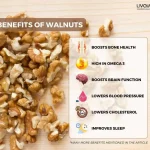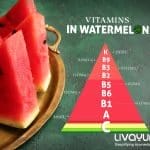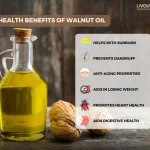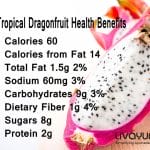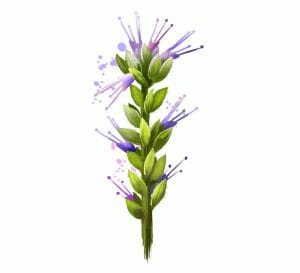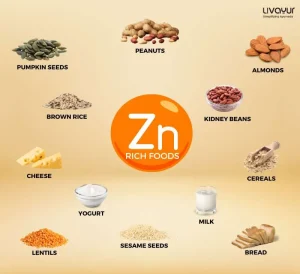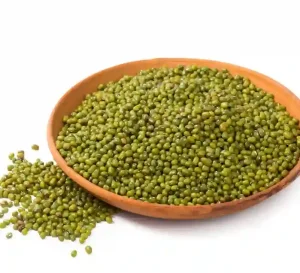This article is reviewed by an expert

Turmeric is an essential spice with a rich history of medicinal use dating back to ancient times. If you have grown up in India, chances are that you have used turmeric for various culinary and medicinal purposes.
One of the main components that give turmeric its medicinal value is curcumin. Curcumin’s therapeutic potential makes it a fascinating natural compound with promising applications in healthcare.
Let’s know more about curcumin and its many benefits in this article.
What Is Curcumin (1)?
Curcumin is a small molecular weight polyphenolic compound with lipophilic properties, commonly found in turmeric. It has been used for its medicinal properties for thousands of years, with its origins dating back to the Vedic culture in India.
Curcumin Benefits (1)
Antiviral Activity
Primary Benefits: Curcumin has demonstrated a wide range of antiviral activity against various viruses, including HPV, influenza virus, Hepatitis B and C viruses, adenovirus, and Herpes simplex 1.
Secondary Benefits: It has also been shown to inhibit the activity of the IMPDH enzyme, which is involved in viral entry and other stages of the viral life cycle, thereby exhibiting promising anti-proliferative, antiviral, and antiparasitic effects.
Anti-Inflammatory Activity
Primary Benefits: Curcumin possesses significant anti-inflammatory activity in both acute and chronic models of inflammation. It can inhibit molecules involved in inflammation, such as transcription factors, cytokines, protein kinases, adhesion molecules, and enzymes.
Secondary Benefits: Curcumin has also been shown to block the activation of NF-κB, a major mediator of inflammation, and suppress inflammation through various mechanisms.
Antioxidant Properties
Primary Benefits: Curcumin improves systemic markers of oxidative stress and modulates the activity of antioxidant enzymes. It also increases the activities of antioxidants such as superoxide dismutase and catalase, and reduces lipid peroxides.
Secondary Benefits: Additionally, curcumin can scavenge different forms of free radicals and inhibit ROS-generating enzymes.
Anticancer Activity
Primary Benefits: Curcumin has been extensively studied for its anticancer activity, showing improvements in gastrointestinal, melanoma, genito-urinary, breast, and lung cancers.
Secondary Benefits: It can also inhibit angiogenesis (formation of new blood vessels) and tumour growth.
Antibacterial Activity
Primary Benefits: Curcumin exhibits the ability to inhibit the growth of periodontopathic bacteria and suppress biofilm formations. It also targets bacterial membranes and has the potential as a topical therapy for wound infections.
Secondary Benefits: In addition, curcumin-loaded fibres also show good antibacterial activity against certain bacteria and may have applications in food packaging.
Anti-Asthma Activity
Primary Benefits: Curcumin alleviates nasal symptoms and suppresses airway inflammation in allergic asthma. It also modulates cytokine levels and inhibits the release of inflammatory mediators.
Secondary Benefits: Furthermore, curcumin inhibits the activation of MAPKs, which play a role in asthma progression.
Antifungal Properties
Primary Benefits: Curcumin shows potential in controlling fungal-related spoilage and fungal pathogens.
Secondary Benefits: In addition, it also inhibits fungal contaminations and reduces proteinase secretion.
Anti-Arthritis Activity
Primary Benefits: Curcumin possesses anti-inflammatory and anti-arthritic properties.
It helps improve overall rheumatoid arthritis scores and is comparable to diclofenac sodium.
Secondary Benefits: Furthermore, curcumin is safe and does not cause adverse events in rheumatoid arthritis patients.
Anti-Diabetic Activity
Primary Benefits: Curcumin exhibits anti-diabetic activity through its antioxidant properties. It also improves endothelial dysfunction and decreases oxidative damage.
Secondary Benefits: Additionally, curcumin supplementation has shown positive effects on β-cell function and insulin resistance in pre-diabetic individuals.
Cardio & Liver Toxicity Protection Activity
Primary Benefits: Research shows that curcumin helps reduce liver and heart damage induced by toxins in animal models. It also decreases elevated serum marker enzymes and lipid peroxidation in liver and heart tissues.
Secondary Benefits: Furthermore, curcumin is known to increase antioxidant levels, such as glutathione and superoxide dismutase, thereby protecting against liver injury and cardiac necrosis.
Wound Healing Activity
Primary Benefits: Studies have shown that ethosomal curcumin promotes wound repair and recovery. It also enhances re-epithelization, neovascularization, collagen synthesis, and granulation tissue formation.
Secondary Benefits: Moreover, curcumin inhibits the growth of burn bacteria and fights against wound infection while stimulating the growth factors involved in the wound healing process.
Depression and Anxiety Control
Primary Benefits: Clinical trials evaluating curcumin’s oral administration for depression showed marked improvement in depression-related symptoms.
Secondary Benefits: Curcumin alone or in combination with standard antidepressant agents can hence help anxiety and depression symptoms.
Eye Disorders Treatment
Primary Benefits: Clinical trials have demonstrated the efficacy of curcumin in treating various eye disorders.
Secondary Benefits: Eye drops containing turmeric have been found to improve symptoms of conjunctivitis, dry eye, dacryocystitis, and degenerative conditions.
Ayurvedic View on Curcumin (2)

Ayurveda emphasises the consumption of curcumin through the use of turmeric or Hardira.
Turmeric is known for its pungent and bitter taste, dry and light qualities, hot potency, and pungent post-digestive taste. It is considered Tridoshashamak, meaning it can help balance all the Doshas.
Ayurvedic Applications of Haridra or Turmeric (2)
Ayurveda uses curcumin to address various health concerns. It utilises the diverse properties of curcumin in different formulations and methods of administration of Haridra and helps treat numerous diseases and disorders. Some of such applications of Haridra or turmeric are mentioned below.
- In diabetes, Ayurveda recommends taking Haridra powder mixed with honey and Amalaka juice.
- For anaemia, a mixture of Haridra, Triphala, ghee and honey is suggested.
- In cases of jaundice, Ayurveda suggests using Haridradi Ghrita or a collyrium made with Haridra, red ochre, and Amalaki.
- For respiratory conditions like cough and bronchial asthma, Ayurveda recommends using Haridra in different forms, such as inhaling the smoke of Haridra wick or using the ash of Haridra with honey.
- In various other conditions such as calculus, piles, Vatavyadhi (Vata disorders), and freckles, Ayurveda provides specific applications and combinations involving Haridra to address the respective issues, based on individual constitution and needs.
The Takeaway
Curcumin, the major component of turmeric, offers a multitude of benefits for overall health and well-being. Its therapeutic properties range from antiviral and anti-inflammatory effects to antioxidant and anticancer activities.
Incorporate curcumin into your lifestyle through turmeric now and harness the power of this ancient medicinal spice.
FAQs
- How can I incorporate curcumin into my daily routine?
You can incorporate curcumin into your daily routine easily by using turmeric in your cooking or taking curcumin supplements.
- Is curcumin safe to consume?
Curcumin is generally considered safe for consumption when used in moderation. However, it’s always a good idea to consult with your healthcare provider before making any significant changes to your diet.
- Can curcumin be used as a substitute for medical treatment?
While curcumin has many potential health benefits, it is not a substitute for medical treatment. It can be used as a complementary approach to support overall health, but always follow the advice of your healthcare professional for specific medical conditions.
Disclaimer: Always consult an Ayurvedic practitioner before using turmeric for medicinal use. The formulation and method of administration depend highly on individual needs, constitution and existing health conditions.






